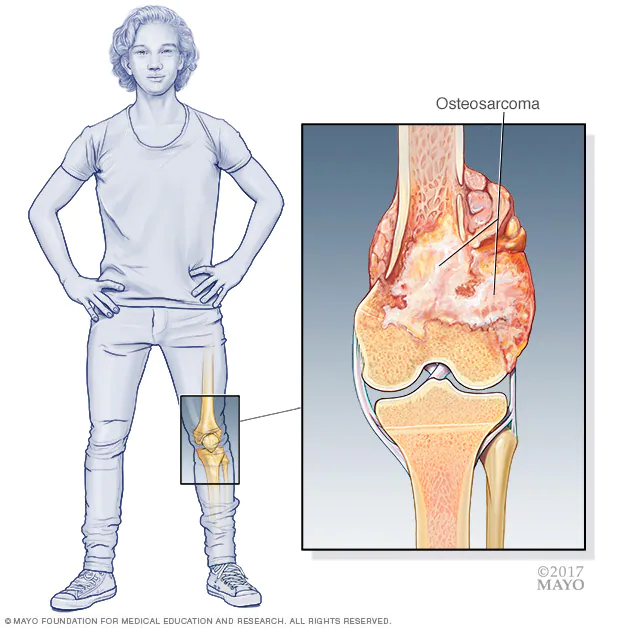Bone Cancer
Bone cancer is a rare type of cancer that begins in the cells of the bone. There are different types of bone cancer, and they can occur in the bones themselves or in the soft tissues surrounding the bones. Here are key points about bone cancer:

- Types of Bone Cancer:
- Primary Bone Cancer: This type of bone cancer starts in the bone tissue. The most common types include osteosarcoma, Ewing sarcoma, and chondrosarcoma.
- Osteosarcoma: Most often occurs in the long bones, such as the arms and legs, and commonly affects adolescents and young adults.
- Ewing Sarcoma: Primarily affects the bones but can also occur in soft tissues. It is more common in children and young adults.
- Chondrosarcoma: Develops in cartilage cells and is more common in adults.
- Secondary (Metastatic) Bone Cancer: This occurs when cancer from other parts of the body spreads to the bones. The most common cancers that metastasize to the bones include breast, lung, and prostate cancers.
- Primary Bone Cancer: This type of bone cancer starts in the bone tissue. The most common types include osteosarcoma, Ewing sarcoma, and chondrosarcoma.
- Risk Factors:
- The exact cause of primary bone cancers is often unknown, but certain risk factors may increase the likelihood, including:
- Genetic conditions: Some genetic syndromes, such as hereditary retinoblastoma or Li-Fraumeni syndrome, may increase the risk.
- Radiation exposure: Previous exposure to high doses of radiation may contribute.
- Paget’s disease of bone: This condition, which affects bone remodeling, may increase the risk of developing bone cancer.
- Signs and Symptoms:
- Symptoms may include bone pain (often at night or with activity), swelling or a lump near the affected area, fractures or bone weakening, fatigue, and unexplained weight loss.
- Diagnosis:
- Diagnosis involves a combination of medical history, physical examination, imaging tests (X-rays, CT scans, MRIs), and biopsy.
- Biopsy samples are taken to examine the tissue and determine whether it is cancerous.
- Staging:
- Staging helps determine the extent of the cancer and guides treatment decisions.
- Treatment Options:
- Surgery: The primary treatment for many bone cancers involves removing the cancerous tissue. This may include limb-sparing surgery or amputation, depending on the extent of the cancer.
- Chemotherapy: Using drugs to kill or control cancer cells.
- Radiation Therapy: Using high-energy rays to target and kill cancer cells.
- Targeted Therapy: Medications that specifically target certain molecules involved in cancer growth.
- Survival Rates:
- Prognosis varies based on factors such as the type of bone cancer, stage at diagnosis, and response to treatment.
- Survival rates are generally better for localized cancers.
- Ongoing Research:
- Ongoing research is focused on understanding the genetic and molecular basis of bone cancers, leading to the development of more targeted and personalized treatment approaches.
- Rehabilitation:
- Rehabilitation, including physical therapy and support for psychological well-being, is often part of the treatment plan, especially for those who undergo surgery.





